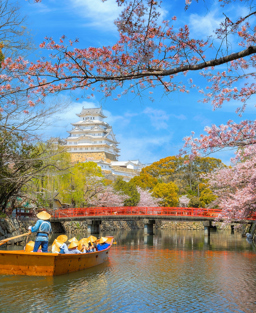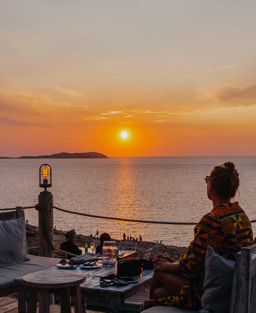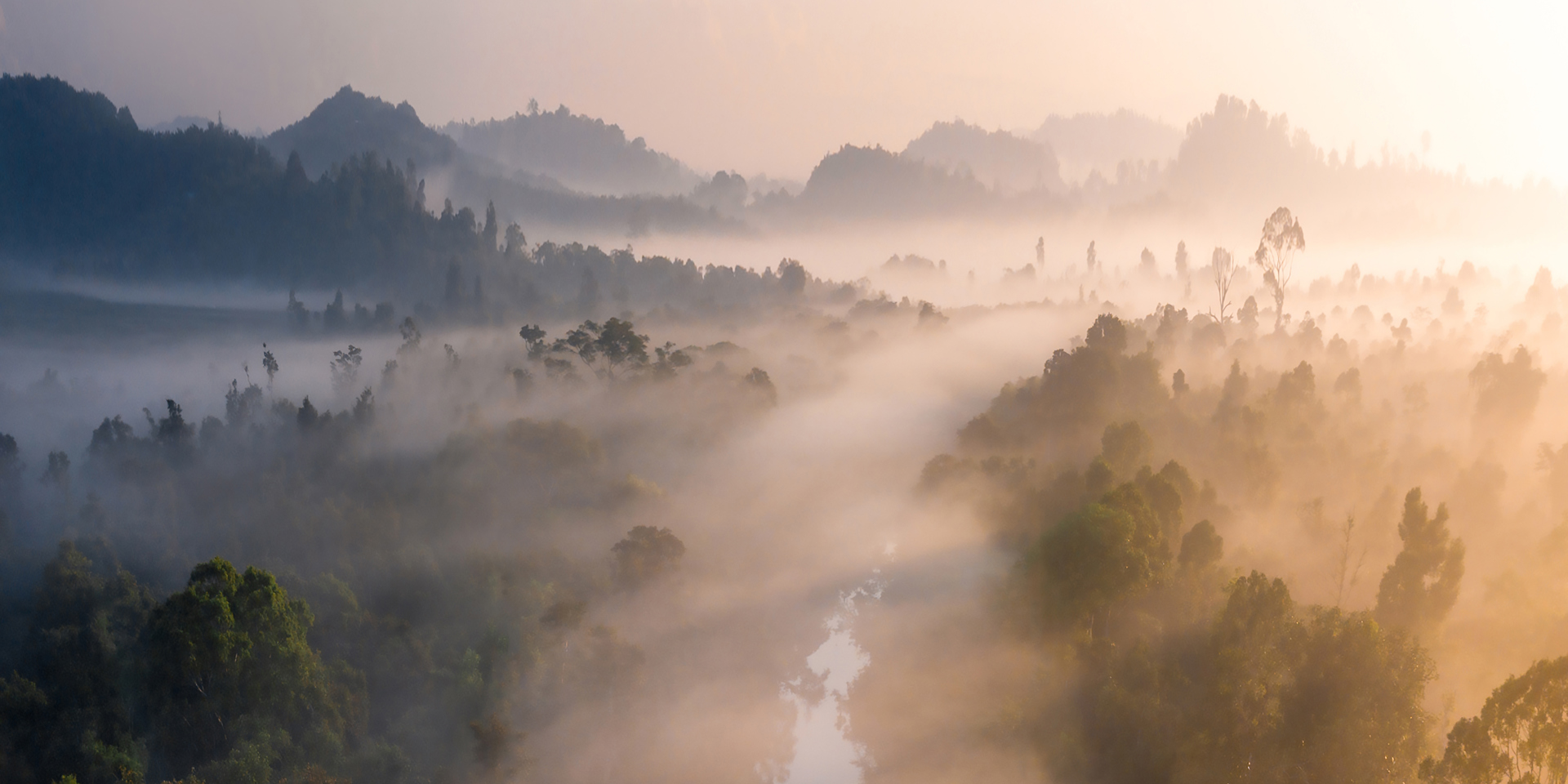

- Promotion
10 reasons why Malaysia’s Sabah is paradise for adventure travel
Home to no fewer than three Unesco sites, Sabah on the island of Borneo is a wilderness utopia and then some…
Words: Agatha Zarzycki
19/11/2025
It comes as little surprise that the state of Sabah is in the third-largest island in the world – this is a place of superlatives. Expect lush jungle treks through ancient valleys, deep dives into colourful waters, staggering landscapes and village homestays with local families. Here are our top ten reasons to visit.
1. A Unesco triple crown
Only three destinations in the entire world are so astonishing that they’ve earned a trio of separate Unesco designations, and, naturally, Sabah is among them. On the west coast, Kinabalu Park spans an impressive 75,370 hectares and is home to thousands of plant species – the rare Gold of Kinabalu orchid can’t be found elsewhere – not to mention unique mammals and birds (imagine Bornean orangutans, fruit bats and hornbills), who swing and soar across a myriad of majestic ecosystems, from lush rainforest to alpine meadows.
Then there’s the breathtaking Kinabalu Unesco Global Geopark, whose 46 one-of-a-kind geosites take up 4,750sqkm, spotlighting Southeast Asia’s youngest granitoid intrusion, ancient oceanic crust and striking glacial landscapes. Think it can’t get better? Crocker Range Biosphere Reserve, Malaysia’s largest terrestrial protected area at 350,584 hectares, is a biodiversity hotspot, ranging from tropical lowland hills to mystical 1,500m-high cloud forests.
2. The tallest tropical tree in the world
The remarkable 330ft Yellow Meranti tree in Sabah’s Danum Valley was discovered by a team of UK scientists in 2018. First spotted using airborne LiDAR tech (which scans forests in Borneo), determining the tree’s exact height required a slightly less sophisticated method: a perilous climb to the top with a tape measure (yes, really), courtesy of brave research assistant Unding Jami. The final measurement? 100.8m high – longer than a football field. Stunned? Wait until you hear the weight: around 81,500kg, which is similar to a Boeing 737-800 ready for take-off.


Sabah is home to some of the world’s tallest tropical trees (© Sabah Tourism/Jollence Lee); Rothschild’s slipper orchid is endemic to the region. Opening image: the fog-shrouded Danum Valley Conservation Area (© Pandhu Waskitha & Tim Phillippus)
3. The smallest bears in the world
Also in Sepilok (on the Sepilok-Kabili Reserve), the 2.5-hectare, visitor-friendly Bornean Sun Bear Conservation Centre rescues orphaned and formerly captive sun bears. Named after the crescent-shaped golden patch on their chest, the smallest bear species in the world is about 1.5m long and 70cm tall, and are known for their curious, playful and shy personalities. The best part? You can see them in action, climbing, foraging, building nests and socialising inside the large, forested enclosures (there are elevated boardwalks and observation platforms for visitors). Keep an eye out for sun bears cuddling up on hammocks – the centre cares for more than 40, so the chances for peak adorableness are high.
4. The smallest elephants in the world
If seeing sun bears and orangutans sounds like a dream, don’t miss the chance to spy (from a distance) on the baby-faced, big-eared Bornean elephant in its wild habitat. The evolutionarily significant species, which are often referred to as pygmy elephants, are morphologically and genetically distinct from mainland Asian elephants – for a start, they’re the smallest and gentlest (and, dare we say, possibly the cutest) of the bunch – and have been isolated on Borneo for approximately 300,000 years. Where to spot them? On an enchanting boat cruise along the Kinabatangan River while zigzagging through dense lowland rainforest, a safari at the Tabin Wildlife Reserve – the ancient forest sanctuary is the largest in Malaysia – on or a guided jungle trek in the Danum Valley, often described as the crown jewel of Borneo’s rainforests.
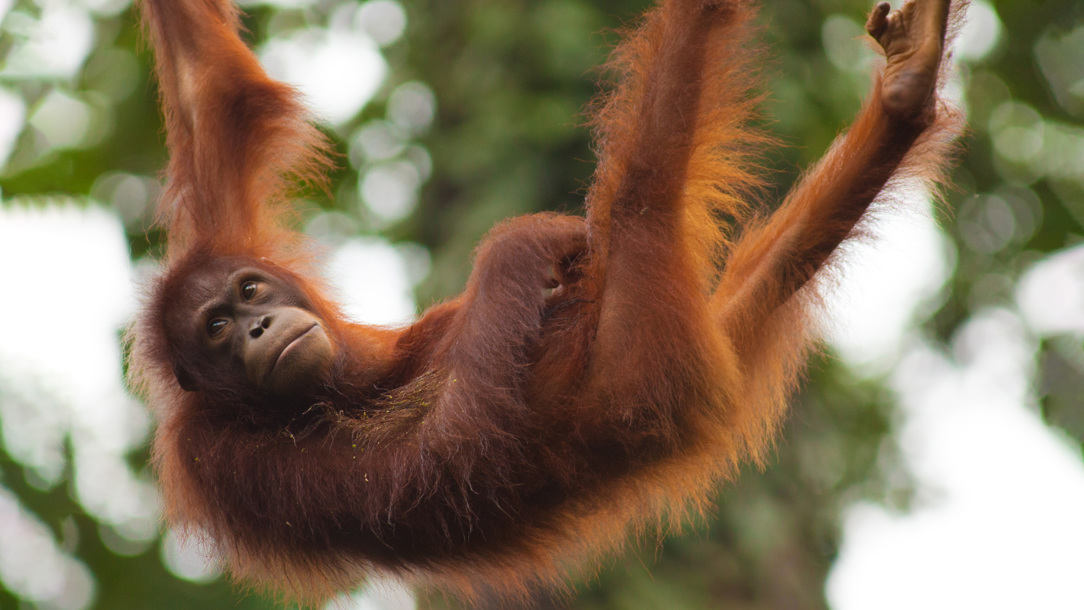
A guest at the Sepilok Orangutan Rehabilitation Centre
5. The world’s first orangutan rehabilitation centre
The Sepilok Orangutan Rehabilitation Centre is set in the Sepilok Forest Reserve, which covers 10,600 acres. Established in 1964 and founded with the support of British conservationist Barbara Harrison, the centre teaches orphaned, injured and displaced orangutans to survive and thrive in the jungle, before releasing them back into the wild. Visitors can watch rangers feed the shaggy, auburn-haired apes (those who aren’t fully independent yet) with bananas and sugarcane twice daily at 10am and 3pm. But it’s not only about orangutans here: rehabilitation is also offered to proboscis monkeys, gibbons (the world’s smallest apes) and other tree-dwelling darlings.
6. One of the best diving spots on earth
“An untouched piece of art” is how French ocean explorer Jacques Cousteau described Sipadan, a stunning oceanic island on the east coast of Sabah created thousands of years ago, thanks to living corals that made camp atop a volcanic cone. The result? A protected marine park of vertical coral walls – in every colour and texture imaginable – that dramatically drop 600m into an infinite blue paradise, where you may be lucky enough to spot green sea turtles, friendly reef sharks, eagle rays, Bumphead parrotfish and, most famously, swirling schools of chevron barracuda shaped like a tornado.
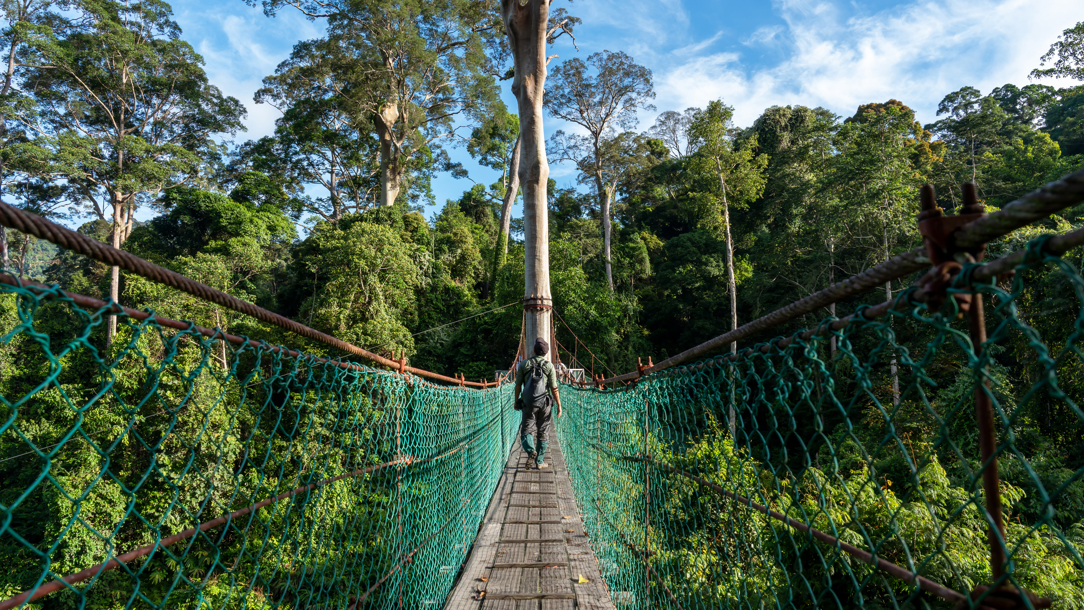
A tree-top canopy walk in protected rainforest near Lahad Datu
7. The highest peaks in Malaysia
Sabah is, naturally, home to Malaysia’s five highest peaks – Murud, Tambuyukon, Sinsing, Trusmadi and Mount Kinabalu (the tallest at 4,095m) – which means thrilling treks aplenty. The most iconic hike? Mount Kinabalu’s summit climb, a two-day adventure starting from Timpohon Gate to Low’s Peak, where seeing spectacular sunrises at the top more than make up for the steep ascent. Picture soft, golden and pink light filtering through misty valleys and a sea of cotton-candy clouds floating in between jagged peaks below. Meanwhile, Mount Trusmadi, Kinabalu’s wilder and calmer little sister, offers a view of Kinabalu itself. Or, for an authentic cultural experience, embark on a three- or four-day spiritual pilgrimage through floral-filled alpine meadows on the sacred mountain of Borneo, Mount Murud.
8. The second oldest lowland rainforest in the world
Eager to continue nature-tastic adventure? Trade mountain climbs for jungle and canopy walks at the ancient Borneo lowland rainforest – shared between Malaysia, Indonesia and Brunei – thought to be around 140 million years old. One of the most magnificent trails is at the Rainforest Discovery Centre in Sepilok: the suspension bridges – totalling 620m – float above giant dipterocarp trees, whose straight, smooth trunks shoot upwards 50m before branching into a glossy green ceiling.
Prefer to take in the otherworldly beauty from ground level? The remote Danum Valley offers trail walks for all fitness levels (make sure to reward your efforts with a refreshing dip at Fairy Falls). Or, if you’re looking to combine nature and community, consider the Miso Walai Homestay, where forest sightseeing and conservation are combined with learning about local customs over homecooked meals with your host family.

Sunset at Tanjung Aru Beach in Kota Kinabalu, Sabah
9. Hundreds of unique bird species
With 688 bird species (many endemic to Borneo), Sabah is a birdwatching utopia. Highlights include the rhinoceros hornbill – its enormous, yellow-orange casque that curves upwards like a horn looks like something straight from a fantasy film. Then there’s the blue-headed pitta, whose electric blue crown appears like a soaring sapphire from a distance. And, if you’re extremely lucky, you might spy the Bornean bristlehead – keep an eye out for a brilliant red head, golden throat and silky black body that emerges as quickly as it disappears. Spot all three in the early morning at the Danum Valley – and don’t forget your binoculars and super secretive stance.
10. Spectacular sunsets
Just when you might think Sabah has reached its height of natural splendour come its surreal sunsets – particularly those on its west-facing coastline over the South China Sea. Top of our list are those at Tanjung Aru Beach, which stretches for 2km and translates to ‘Casuarina Cape’ in Malay, a tribute to the evergreen casuarina trees brushing the shoreline. Arrive early to snag a prime sunset-spectating spot, before getting lost in fiery oranges, magical magentas and silhouettes of the nearby islands of Pulau Sulug and Pulau Manukan. The marvel is just 6km from Kota Kinabalu, also deserving plenty of praise for its sky transformations. Go on a sunset spree with three stops, starting at calm and camera-ready Likas Bay Promenade around 4.30pm, before moving on to Tanjung Aru Beach for 6pm, and ending the evening at 7.15pm at the KK Waterfront, where the entire boardwalk has a sun-studded glow-up.




